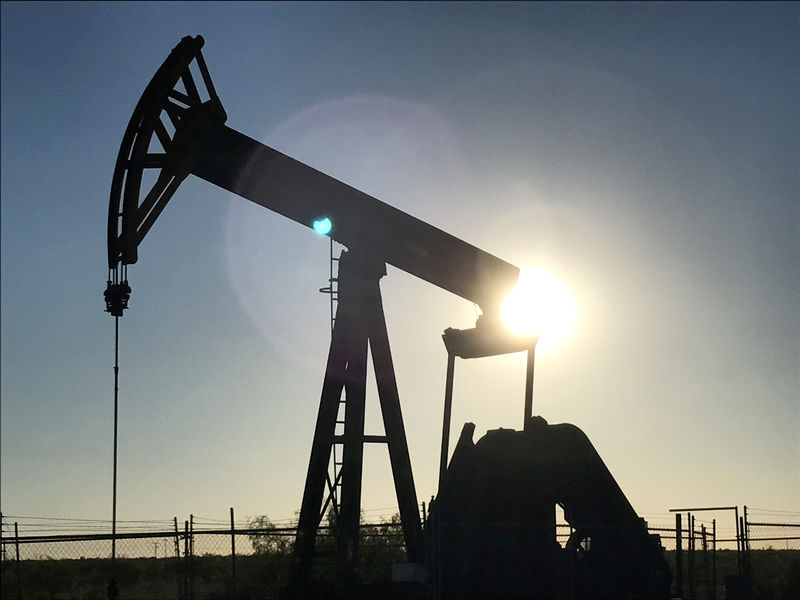By Ernest Scheyder
HOUSTON (Reuters) - U.S. shale producers survived an oil price crash and confounded OPEC's efforts to drain a global glut by employing innovative drilling and production techniques. Now, some of these producers are turning to creative investments to pump more oil.
Drilling joint ventures, called "DrillCos" for short, combine cash from investors like Carlyle Group LP (O:CG) with drillable-but-idle land already owned by producers. Investors get a pledge of double-digit returns within a few years, while producers can raise productivity without spending more of their own money.
The total raised by these ventures - at least $2 billion in the last 24 months - is a small part of overall shale financing. But they represent another way for Wall Street and shale producers to increase the flow of oil, and frustrate plans by the Organization of the Petroleum Exporting Countries to prop up prices.
Private equity this year has showered more than $20 billion on U.S. energy ventures. Driven by shale expansion, U.S. oil production this year is forecast to increase by 570,000 barrels per day (bpd) to 9.9 million bpd, the U.S. Energy Information Administration estimates.
NO BALANCE-SHEET RISK
Drillcos take control of drillable land and generally turn over 100 percent of the cash flow from oil and gas production to investors until they earn a 15 percent return. At that point, control reverts to the producer, with the investor's stake shrinking to about 10 percent of remaining production.
"It's a type of surgical, temporary capital," Mark Stoner a partner at private equity fund Bayou City Energy LP, said in an interview. Bayou City committed $256 million to an Oklahoma drillco with privately held Alta Mesa Holdings LP [ALMEH.UL] last year.
"We get exposure to great, prolific oil basins, but don't have to take on balance sheet risk."
Companies such as EOG Resources Inc (N:EOG), one of the financially strongest U.S. shale producers, are turning to drillcos.
Two months ago, EOG struck a $400 million deal with Carlyle to finance wells in Oklahoma. The investment lets EOG focus its own cash on the Permian Basin, the largest U.S. oilfield, and lifts its production without increasing its spending.
The venture also allows EOG to double or triple the value of land it held on its books, Lloyd Helms, EOG's head of exploration and production, said an industry conference in May.
Legacy Reserves LP (O:LGCY), Exco Resources Inc (N:XCO), Alta Mesa and EOG are among 34 oil producers that since 2015 have formed drillcos worth more than $2.05 billion. The money has come from investors including Blackstone Group (N:BX), Carlyle, KKR & Co (N:KKR), and others, according to 1Derrick Ltd, which tracks oilfield land deals.
PUTTING IDLE LAND TO USE
Historically, one way producers wrung more cash from financiers was to pledge future output for cash payments to finance drilling. There was no swap of land and no guaranteed return. Drillcos differ in that investors get control of land until a double-digit rate of return is met, providing insurance against a default.
For producers, these ventures also help boost the total amount of oil they can eventually recover. Wall Street is rewarding those with strong production with share price gains at a time when OPEC and its allies have agreed to pull 1.8 million bpd off the global market.
"This helped us drill acreage that we wouldn't otherwise have been able to drill right away," Mike McCabe, Alta Mesa's chief financial officer, said in an interview.
For investors, the potentially high rates of return, compared with commercial loan rates running about 5 percent to 7 percent, have spurred interest despite crude prices (CLc1) under $50 a barrel.
"There's a lot of money seeking a home, especially in this low interest rate environment," Mingda Zhao of Vinson & Elkins LLP, a law firm that has negotiated drillco agreements, said in an interview.
Drillcos are not risk free. If oil prices tumble, investors' ability to grab high returns within a few years fades. Shale producers also must be willing to provide more information on the land than they would under more common loan agreements.
Such detailed information "gives us well-level insight into what's going on in a basin," said Bayou City's Stoner.
For Carlyle, one of the world's largest private equity funds, the drillco with EOG was a relatively low-risk way to invest in U.S. shale.
"We were looking for very specific types of assets and drilling deals to make the risk-return work for us," David Albert, co-head of Carlyle's Energy Mezzanine Opportunities funds, said in an interview.
The funds, with more than $4 billion under management, can still make money on its drillco investment even after oil prices (CLc1) slipped below $45 per barrel this month on oversupply concerns.

"Even with current oil prices, there are still economic opportunities to be had out there," Albert said.